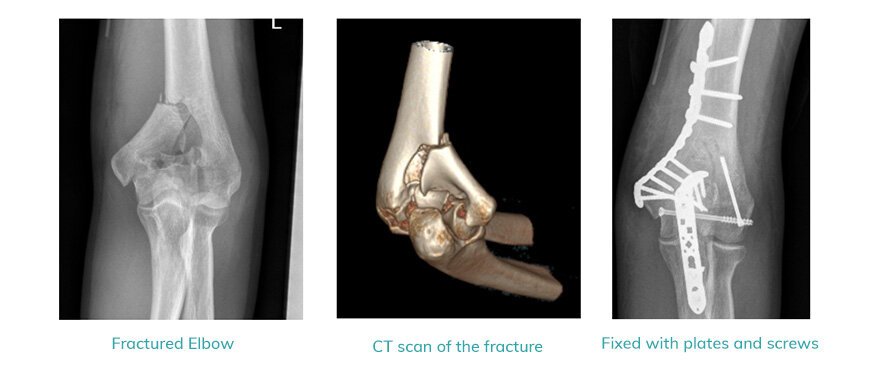Distal Humerus Fracture Treatment
Home > Condition & Treatment Map > Arm Conditions & Treatments > Distal Humerus Fractures
Overview
Distal Humerus fractures are relatively uncommon injuries. Some fractures will simply be a crack while others will be significant elbow injuries. They often result after a fall or accident.
Treatment
Non-operative management
A simple crack in the bone, while painful, will normally heal well. Dr Stevens will oversee treatment in a sling. Follow up x-rays will be required.
Operative management
If the broken bone has moved too much or if there is instability of the elbow, surgery to lock the bone back in place may be the best option.
Risks associated with surgery
As with all surgery, there are risks repairing fixing your distal humerus fracture. These include infection, delayed healing or no healing of the bone. Difficulty with pain and range of movement may also be occur. Two important nerves, the radial and ulnar nerve, may be injured as a result of your injury or the surgery to fix it. Sometimes surgery to remove screws or the plate is required in the future. Removal of bone fragments may be required. Arthritis of the elbow may occur as a result of this injury.
Post-operative care
If you and your specialist decide that surgery is the best option for your elbow injury, you will stay in hospital overnight following your surgery and will be discharged the next day with pain relief to take for two to three of days as you need.
There will be a dressing over the surgical incision on the side of your elbow. You will have a bandage over the elbow and a sling. Sometimes a half cast is required to keep the elbow still.
You can move your fingers, wrist and shoulder straight away, but wear the sling provided for most of the day. The sling helps to take the weight of your arm to let the elbow rest.
After 2 weeks you will have an appointment with the team to have your wound checked, any stitches will be removed. Your trauma specialist will then give you advice on exercises and physiotherapy.
Physiotherapy can be helpful to get your elbow moving and strong again, but do not start this until you have had your appointment with your specialist at 2 weeks.
When to contact us
If you have any of these problems, please call the rooms on 03 5752 5020
Fever
Heavy bleeding or ooze from the wound
Increased swelling and redness around the surgery site
Pain in the calf muscles or difficulty breathing



